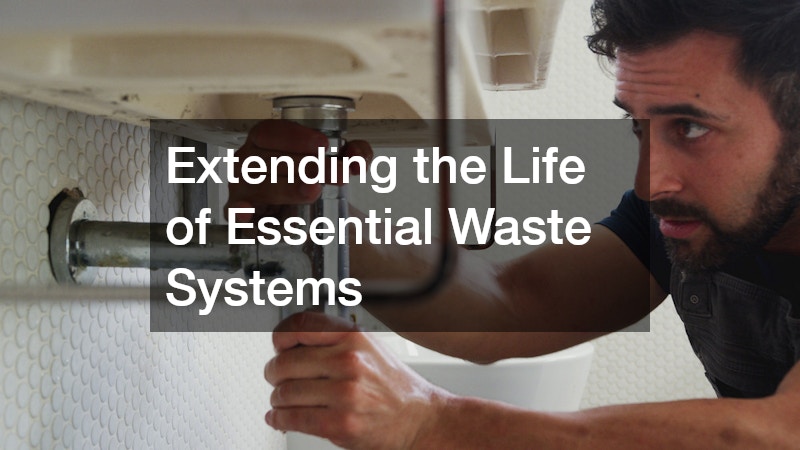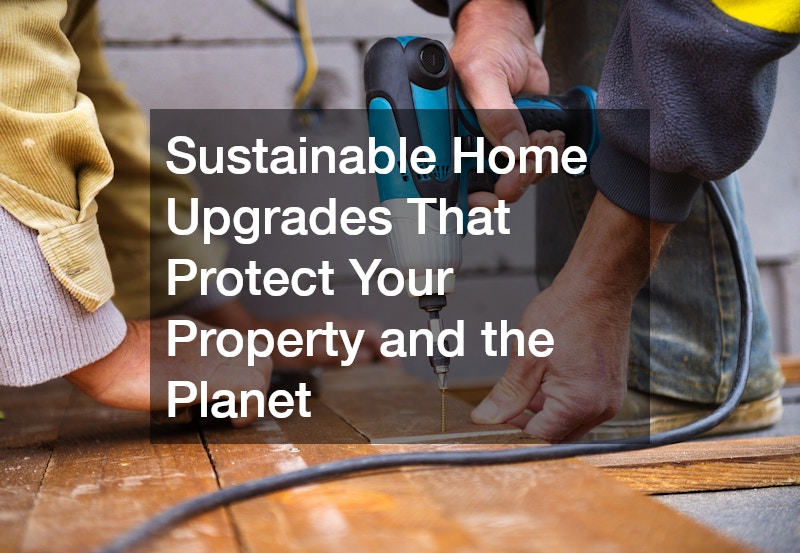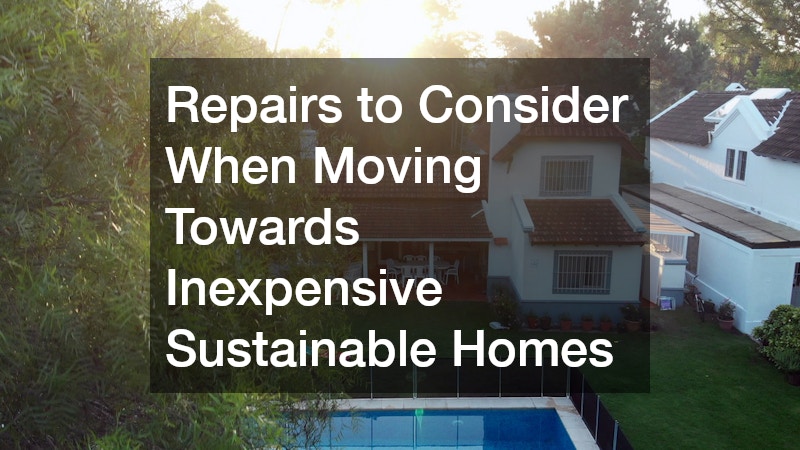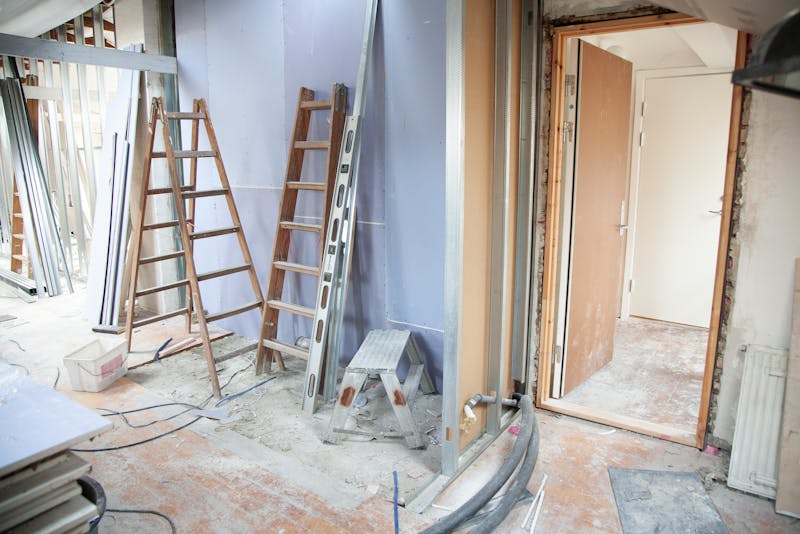Homeowners today are increasingly aware that their living spaces can impact both personal well-being and the environment. Renovating or maintaining a home isn’t just about aesthetics; it’s about creating a space that is durable, energy-efficient, and in harmony with nature. Sustainable upgrades can minimize waste, reduce energy consumption, and protect the structural integrity of a property over the long term. Thoughtful planning ensures that renovations not only enhance comfort and value but also contribute to a healthier ecosystem.
Achieving this balance requires a comprehensive approach, considering every element of a home from its foundation to its roof. Choosing methods and materials that are environmentally responsible and long-lasting can prevent frequent repairs and reduce the homeowner’s carbon footprint. Sustainable home upgrades often combine traditional craftsmanship with innovative solutions, providing resilience against weather, pests, and natural wear.
Improving Home Health Through Preventative Maintenance

Regular maintenance is essential for a healthy home, particularly in reducing the risk of infestations and structural damage. Homes are living environments that interact with nature, which means pests, mold, and other issues can compromise both comfort and safety. Preventative measures, like inspections and careful upkeep, ensure small problems don’t become large, costly repairs. Sustainable practices emphasize non-toxic solutions, using environmentally friendly approaches to maintain indoor and outdoor areas.
For homeowners looking to integrate eco-conscious methods, a local pest control service can provide treatments that target infestations without introducing harmful chemicals into the home environment. These professionals assess the property, identify risk areas, and implement preventative strategies tailored to specific pest challenges. Using sustainable products reduces exposure to toxins for both humans and pets, while also maintaining the balance of local ecosystems. Regular treatments from a reputable service help maintain a healthy home environment, protecting both structural elements and residents’ well-being.
Homeowners can adopt ongoing habits that support a pest-free environment. Proper storage of food, sealing gaps in walls and doors, and maintaining clean landscaping all complement professional treatments. These simple daily practices enhance the effectiveness of sustainable pest control and reduce reliance on chemical interventions, creating a more balanced, environmentally conscious home ecosystem.
Protecting Your Home’s Foundation From Moisture Damage
Moisture is one of the leading causes of structural problems in homes, potentially leading to mold, rot, and foundational deterioration. Protecting a property from water-related issues is critical for maintaining long-term durability. Techniques like proper drainage, sealing vulnerable areas, and choosing moisture-resistant materials help homeowners safeguard their investment. Eco-friendly approaches to waterproofing often rely on natural or non-toxic sealants, which offer protection without contributing to environmental pollution.
Hiring a professional waterproofing company ensures that the home’s foundation and critical surfaces are properly treated. These experts conduct assessments to determine areas at risk of water infiltration and apply targeted solutions, from basement sealants to exterior barrier systems. By preventing water from seeping into structural elements, homeowners reduce the likelihood of costly repairs and maintain indoor air quality. Sustainable waterproofing practices also minimize environmental impact, making them a practical choice for anyone aiming to combine resilience with eco-conscious living.
Homeowners can also incorporate landscaping and exterior modifications to support waterproofing efforts. Installing rain gardens, proper gutter systems, and permeable pathways reduces surface water accumulation and complements the work of professionals. Integrating these strategies strengthens moisture management naturally, helping the home remain dry, durable, and environmentally responsible.
Designing Eco-Friendly Spaces With Expert Guidance

Renovating a home to be both functional and environmentally responsible requires thoughtful design. Sustainable remodels prioritize energy efficiency, low-impact materials, and optimized layouts to reduce energy consumption and resource waste. Planning upgrades carefully ensures that each change complements the home’s overall environmental footprint while enhancing livability. Decisions made during the design phase, such as lighting, insulation, and material choices, can significantly affect long-term sustainability.
Working with a local remodeler can make the process smoother and more effective. Professionals bring expertise in both traditional construction methods and modern eco-friendly practices, ensuring that upgrades meet the homeowner’s vision without compromising environmental considerations. They can recommend renewable materials, efficient appliances, and innovative layouts that maximize natural light and airflow. This guidance helps homeowners avoid costly missteps and ensures that every renovation contributes to a healthier, more sustainable home.
Homeowners can also collaborate with remodelers to incorporate smart technology into renovations. Energy-monitoring systems, programmable thermostats, and water-efficient fixtures allow homeowners to track and reduce resource consumption over time. These enhancements, combined with thoughtful design, maximize both comfort and sustainability, making the remodeled space truly future-ready.
Strengthening Structural Integrity With Long-Lasting Repairs
The longevity of a home depends heavily on the condition of its structural components. Ensuring that walls, roofs, and other essential elements are sturdy prevents damage, reduces repair frequency, and enhances safety. Homeowners can adopt preventive strategies that address potential weak points early, which not only prolongs the life of the property but also minimizes environmental waste associated with frequent rebuilding or replacement.
Timely roof repair is a crucial part of maintaining structural integrity. By addressing leaks, damaged shingles, or compromised flashing promptly, homeowners prevent water damage and preserve insulation efficiency. Sustainable repairs may include recycled materials or energy-efficient roofing solutions that provide durability while reducing environmental impact. Working with experienced professionals ensures that repairs are completed correctly, safeguarding the home’s structure and helping homeowners avoid more extensive interventions later.
Preventive roof maintenance can also include regular inspections and cleaning to remove debris, moss, or algae that could compromise roofing materials. Taking these simple measures extends the life of roofing repairs, reduces waste, and ensures the home remains energy-efficient, resilient, and environmentally responsible over time.
Evaluating Your Property’s Land for Sustainable Projects

Understanding the land surrounding a home is vital when planning eco-friendly renovations. Site evaluation includes assessing topography, soil quality, drainage, and vegetation. These factors influence construction choices, landscaping, and sustainability strategies. Proper evaluation helps homeowners minimize environmental disruption, prevent erosion, and optimize water management, creating a harmonious balance between the built and natural environments.
A thorough land surveying process enables precise planning for construction or remodeling projects. Surveyors identify boundaries, measure elevations, and map features critical for sustainable design. This information allows homeowners and contractors to plan structures, drainage systems, and gardens in ways that minimize ecological impact and maximize resource efficiency. With accurate data from a survey, eco-conscious projects can proceed confidently, reducing the risk of unforeseen environmental or structural challenges.
Understanding land patterns allows homeowners to optimize energy efficiency and natural resource use. For example, positioning solar panels for maximum sun exposure or orienting gardens to conserve water can make projects more sustainable. Thoughtful land use supports a home’s long-term environmental and financial health, blending functionality with eco-friendly design.
Maintaining a Cleaner System for Environmental Efficiency
Proper waste management is a core component of sustainable living. Septic systems, if not maintained, can cause contamination of local water sources and create health hazards. Regular upkeep ensures these systems function efficiently, preventing pollution and costly emergency repairs. Homeowners who prioritize environmental responsibility often seek professional services to manage waste in a safe and sustainable manner.
Scheduled septic pumping is one of the most effective ways to maintain a healthy system. Professionals remove accumulated solids, inspect components, and ensure that the system operates optimally. Routine pumping prevents backups, reduces environmental contamination, and extends the lifespan of the septic infrastructure. By following recommended schedules, homeowners support both the integrity of their property and the surrounding ecosystem, aligning maintenance practices with broader sustainability goals.
Homeowners can further support system efficiency by moderating water usage and avoiding harsh chemicals that could harm septic bacteria. Practices like fixing leaks, spacing out laundry loads, and using biodegradable cleaning products complement professional pumping, reducing environmental impact and ensuring a functional system for years to come.
Extending the Life of Essential Waste Systems

Beyond regular pumping, comprehensive septic care includes monitoring, repairs, and sometimes system upgrades. A well-maintained system reduces odors, prevents leaks, and minimizes environmental risks. Homeowners can adopt practices such as using biodegradable cleaning products and conserving water to enhance system efficiency. Sustainable septic management ensures that waste disposal is safe for both the household and the surrounding community.
A professional septic service provides inspections, repairs, and guidance for maintaining optimal function. These specialists can identify early signs of wear, clogged lines, or potential hazards before they escalate into major issues. By engaging a certified service, homeowners gain peace of mind, knowing their waste systems operate efficiently while minimizing negative impacts on the environment. This combination of professional care and conscientious use supports a long-lasting, eco-friendly home.
Proactive monitoring of the septic system, such as keeping accurate maintenance logs and addressing minor issues quickly, reinforces system health. By taking a hands-on approach alongside professional service, homeowners ensure that their waste systems remain environmentally responsible, cost-effective, and operationally efficient.
Preparing the Ground for Eco-Conscious Construction
Every sustainable renovation starts with proper site preparation. Excavation and grading must consider soil stability, water flow, and ecosystem preservation. Eco-conscious construction minimizes disruption to local habitats, retains native vegetation where possible, and prevents unnecessary soil erosion. Thoughtful preparation lays the foundation for durable, environmentally responsible projects.
A reliable local excavating company can manage these tasks with precision and environmental sensitivity. These professionals handle grading, digging, and earth-moving while adhering to sustainable practices, such as minimizing fuel use, reducing soil compaction, and protecting nearby vegetation. Proper excavation supports structural stability and ensures that new construction integrates harmoniously with the surrounding landscape. Partnering with a skilled company allows homeowners to pursue ambitious renovations while maintaining respect for the natural environment.
Careful planning with an excavating company can help incorporate sustainable landscaping or rainwater management features. By coordinating site work with broader eco-conscious goals, homeowners create functional and environmentally friendly outdoor spaces that complement the home’s upgrades and improve resilience against weather-related issues.
Managing Household Pests Without Harming the Environment
Effective pest control is a key component of a sustainable home. Instead of relying on harsh chemicals, homeowners can adopt strategies that prevent infestations and minimize harm to beneficial species. Integrated approaches focus on sanitation, exclusion, and targeted treatments that maintain ecological balance while protecting the home’s integrity.
An experienced pest exterminator provides solutions that combine preventive measures with environmentally friendly treatments. They assess the property, identify pest habitats, and implement strategies that reduce infestations without releasing toxic substances. Using such services ensures a healthier indoor environment and protects surrounding wildlife. Sustainable pest management practices, combined with professional guidance, help homeowners maintain comfort while adhering to eco-conscious principles.
Homeowners can also implement physical and natural deterrents, such as sealing entry points, using barriers, or planting pest-repelling vegetation. These ongoing measures reinforce professional treatments and maintain a pest-resistant, environmentally responsible home ecosystem.
Enhancing Energy Efficiency Through Smarter Roofing Solutions
A roof is more than a protective covering; it significantly impacts energy consumption and overall sustainability. Energy-efficient roofing reduces heating and cooling costs, contributes to thermal comfort, and minimizes resource waste. Selecting durable, reflective, or insulated materials enhances both comfort and environmental performance, making the roof a critical element in green home upgrades.
Collaborating with skilled roofers ensures that sustainable roofing solutions are properly installed. Professionals can recommend materials such as recycled shingles, metal roofing, or green roof options that support energy efficiency and longevity. Proper installation prevents leaks, improves insulation performance, and extends the lifespan of the roof. By integrating eco-conscious techniques, homeowners achieve a balance of comfort, durability, and environmental responsibility.
Homeowners can further enhance roof efficiency through supplemental measures like attic insulation, ventilation improvements, or solar panel integration. Combining expert installation with these upgrades maximizes energy savings, reduces carbon emissions, and strengthens the long-term sustainability of the home.
Sustainable home upgrades provide a unique opportunity to enhance both the comfort and longevity of a property while minimizing environmental impact. By thoughtfully addressing elements from preventative maintenance to energy-efficient roofing, homeowners can reduce waste, lower utility costs, and create healthier living spaces. The approach requires careful planning, professional guidance, and a commitment to eco-conscious practices that benefit both the household and the broader ecosystem.
Investing in environmentally responsible renovations ensures that each improvement contributes to a safer, more resilient, and resource-efficient home. Whether upgrading structural components, maintaining waste systems, or protecting the property from natural threats, sustainable methods pay long-term dividends. Homeowners who embrace these practices not only preserve the value of their property but also play a vital role in promoting a greener, healthier world for future generations.



